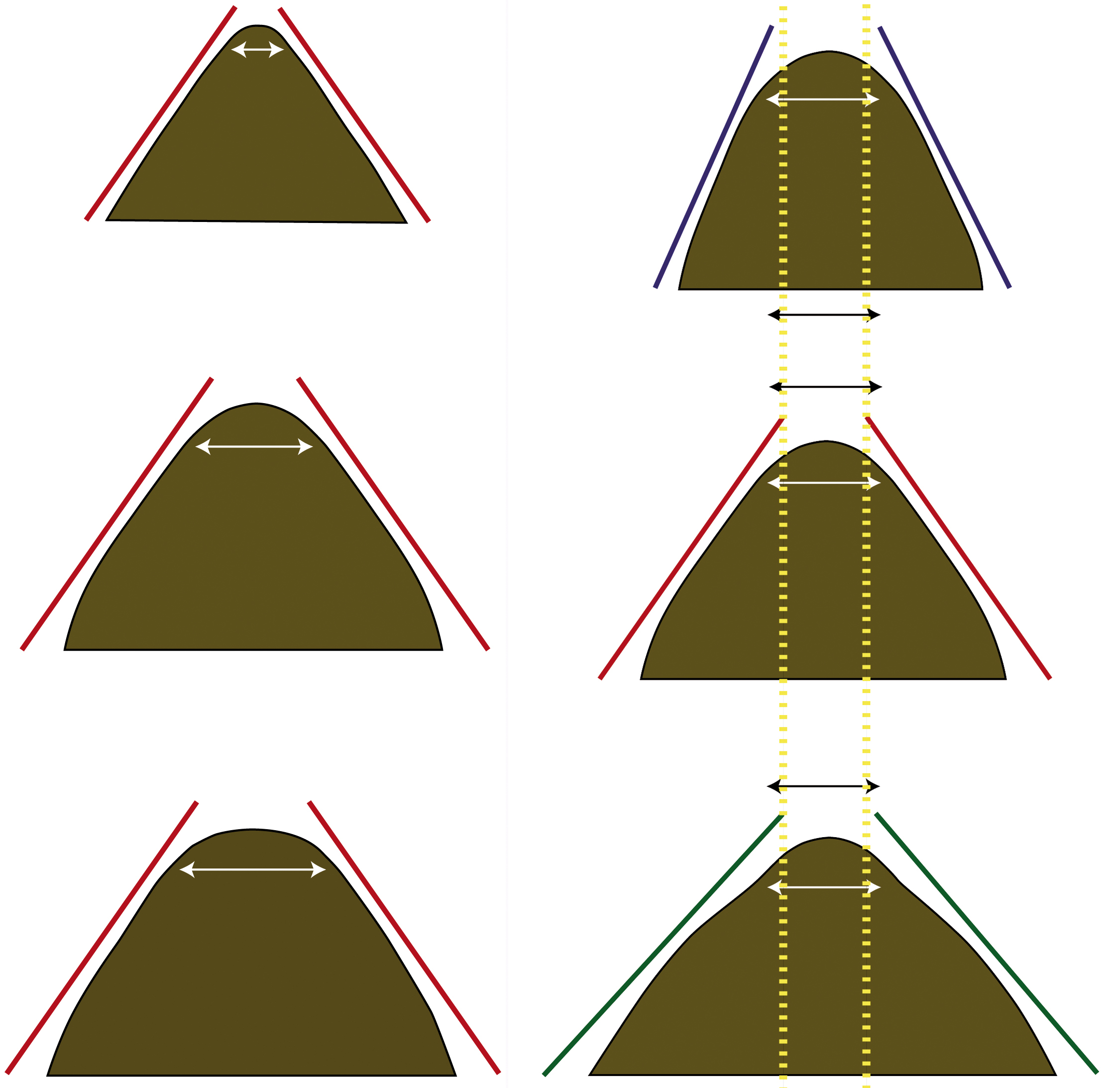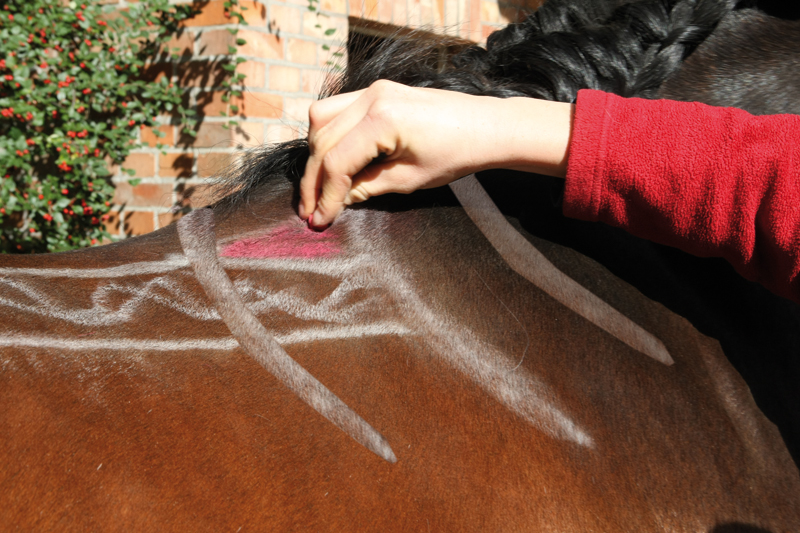Saddle Fit and Tree Angle and Width – Tips #8-9
We’re down to the last two tips in my series of 9 Points of Saddle Fit; I have consolidated them because they work very much together. You really can’t have one without the other, which is something that many saddle manufacturers (especially those with ‘self-adjusting’ or DIY gullet plates really don’t seem to understand). These gullet plates will definitely change the angle, but unfortunately do not address the necessity of being able to accommodate the changes in width over the withers as well that are required for a proper fit.

Pretty much everyone riding is aware that trees come in narrow, medium, or wide, but these designations can refer both to the width of the tree (gullet plate) and to the angle. If your saddle is a “narrow wide,” this means it has a narrow tree angle with a wide tree width. This is the application you will see most often for a horse which has been well trained and is being ridden regularly – he has a wide barrel and the shoulders are up and back.
If the saddle does not stay behind the horse’s shoulder, and constantly moves forward because the width and angle are wrong for his conformation, the tree points of the saddle will drive into the horse’s shoulders, first producing a buildup of scar tissue on his scapula, and then chipping away cartilage and bone. This irreversible long-term damage can lead to persistent unsoundness and the premature retirement of the horse.
In order to avoid this kind of damage, it is crucial that the angle of the tree be adjusted to match the angle of the horse’s shoulder. Think of two sliding doors. If they are properly aligned, one will slide freely past the other. But if they are not, one will jam into the other. It is the same with your horse’s shoulders and the angle of his saddle’s tree. As the horse moves, his shoulder rotates upward and backwards. If the tree angle does not match the angle of the shoulders, they will be unable to rotate freely under the saddle, compromising movement. At the very least, a saddle with a tree angle that is not correctly adjusted is extremely uncomfortable for your horse. At worst, it can lead to irreversible long-term damage.
Determining Angle
We use the Sprenger gauge to measure the horse’s shoulder angle. It is put behind the shoulder blade, so that the upper arm of the device is parallel to the angle of the horse’s scapula. The tree of the saddle is then adjusted so that the angle matches that of the horse’s shoulder. (However, in its most basic form, one could use the flexible ruler to determine shape over the withers, which is somewhat remedial if you really want to get the angle degree right).

How can you tell if the tree angle on your saddle is correct for your horse? Put the saddle on your horse without a saddle pad. Then check if the angle of the piping on the saddle matches the angle of your horse’s shoulder. If it does, the angle of your saddle’s tree is correctly adjusted for your horse.

If you’re still uncertain if the angle of your saddle’s tree is correct for your horse, observe his behavior under saddle. If the tree angle is too wide, there may be clearance on the top of your horse’s withers, but the saddle will pinch the sides of his withers. It will also hit the reflex point (cranial nerve 11) that restricts movement in his shoulders and makes him unwilling or unable to move freely forward. The horse will raise his head or hollow his back, or exhibit other forms of resistance until the reflex point/ nerve becomes numb. If your horse behaves in this manner, it may be because the tree angle of your saddle is incorrect for him. It is important to understand that your horse doesn’t want to be bad, but if the saddle keeps hitting that reflex point, he almost has no choice: he cannot engage the muscles you’re asking him to engage. One of the most common excuses I hear is that “I have to ride him for a while and warm him up before he’ll listen”. What is really happening here is unfortunately that the horse is being ridden until he becomes numb to the pain! So maybe here is the reason why – and even though a saddle may look like it fits while the horse is standing still, the angle may actually change when he begins to move. (I know this seems somewhat counter-indicative, but if the angle is too wide, the saddle will actually sit on the withers once the rider is on the saddle even though it looks like there is more than enough room when the horse is standing still and there is no rider.)
Too often we see a saddle with a tree that is too narrow for a particular horse. Your horse’s shoulders cannot move freely under such a saddle. Trying to make a saddle fit where the tree is too narrow by adding more padding is akin to wearing another pair of socks to make your shoes fit if they’re already too tight – it doesn’t work! (But unfortunately I often see riders doing this in an effort to make a particular saddle fit!)
If the tree is too wide, the entire saddle may rock or slip from side to side when it’s being ridden, or the back half of the saddle may twist to one side or the other. (But this may also happen when one side – usually the left – is more heavily muscled than the other, forcing the saddle then over to the other side in compensation)
Tree width and tree angle absolutely need to be adjusted together. If the width of your saddle’s tree is correct for your horse, but the angle is incorrect, the saddle will not fit your horse. Conversely, if the angle is alright, but the width is not, the same will happen. Adding flocking to or removing flocking from the vertical panels of the saddle will not solve the problem – it is the gullet plate that needs to be adjusted. Sometimes both the width and angle of the saddle’s tree are incorrect for a particular horse.
A properly fitted saddle will have a tree that is wide enough and an angle that is correctly adjusted so as to avoid hitting the spinalis muscle. This is also a reflex point that inhibits or completely stops forward movement. Remember – when a stallion breeds a mare, he bites her on this reflex point so that she stands still, hollows her back, and rotates her pelvis open. In order to locate your horse’s spinalis muscle, draw a line 4” down from the base of your horse’s withers, and then draw a horizontal line back (see below). The saddle must stay off of that triangle – we call this the ‘triangle of doom’ if you want to get really dramatic about it – but the thought is valid; if you pinch the horse in this triangle, you doom him to pain and you will not move forward (at least not very well or very willingly).

Contact us at 800 225 2242 or online at www.saddlesforwomen.com to book your own diagnostic 80-point evaluation to ensure that your saddle fits at all 9 points!
and Remember – if your saddle fits everywhere as it should, you don’t pay for your evaluation!
©2016 Saddlefit 4 Life® All Rights Reserved
